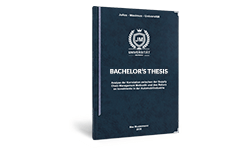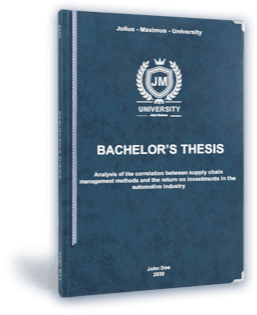
Hardcover binding is the gold standard for preserving printed materials. Renowned for its sturdy construction and professional appeal, this binding method offers unparalleled protection for books, theses, and special editions. Whether you’re a student, author, or publisher, this article will give you necessary insights for this type of binding and can help you make informed decisions for your next project or purchase.
Definition: Hardcover
This elegant binding technique is also known as hardback, hardbound, casebound, and leather book binding. Oftentimes protected by dust jackets, hardcover books are characterized by rigid covers made of heavy paperboard or binder’s board, making them a popular binding in terms of bookbinding and book purchases. Due to its durability, hardcover is an excellent choice for discerning collectors and avid readers.
- ✓ 3D live preview of your individual configuration
- ✓ Free express delivery for every single purchase
- ✓ Top-notch bindings with customised embossing

History
Hardcover binding has its roots in the early bookbinding traditions of the 15th century when Johannes Gutenberg invented the printing press, waving goodbye to the tedious process of hand copying, and saying hello to mass production. Back then, the binding technique was referred to as “case binding,” with the protective case made out of paperboard or cardboard and sewed-in pages along the spine.
As printing technology evolved and the book printing market became more competitive, publishers needed to stand out from the crowd and thus invented cloth binding for instance. These cost-effective cloth bindings were then decorated with sophisticated designs through embossing and stamping.
After the mid-20th century, cloth binding was replaced by “clothette,” which is textured paper that somewhat resembles cloth, but can be easily differentiated up-close. Nowadays, cloth-bound books are often made of thick cardboard and covered with clothette, while cloth covers only the spine.
Materials
Hardcover binding relies on carefully selected materials to achieve its durability and aesthetical appeal. Each component plays a crucial role in order to meet the standards of quality and longevity, especially when it comes to academic work, such as dissertations, Ph.Ds, and theses.
Hardcover cover boards are mostly made from thick paperboard or binder’s board, which is a high-quality and acid-free sheet of pressed organic material—primarily wood pulp or cotton fibers. Due to its rigidness, paperboard can be easily cut and formed, which is why it is often used in packaging.
Covering material can include cloth, leather, synthetic materials, or paper. Leather and cloth are traditional choices, while modern bindings typically use cost-effective synthetic alternatives—which is specifically beneficial for students with a tight budget—that have a leather-like look and are easier and faster to work with.
Endpapers are especially favorable for actual books. These are decorative pages that consist of a double-sized, folded sheet and can be found when opening the first pages and closing the last pages of a hardcover book. As mentioned, these papers can be used creatively with designs, maps, or information, or they can just be plain pages that attach the book block to the cover.
The spine material is usually reinforced with cloth or synthetic materials to hold the book block together and securely attach it to the covers. The spine itself can be flat or rounded and many high-end books feature decorative stitching or embossing on the spine material.
Production
The production of hardcover-bound books involves multiple steps; each one is listed below.
- Sheets of paper are printed with the book’s content, with precise alignment of text and images maintained throughout the process. These sheets are then folded into sections (called signatures) and assembled in the correct sequence for binding.
- The folded sections are either sewn together using durable thread or glued to form the book block. Sewing creates a stronger, more flexible binding, while gluing is a quicker and more cost-effective option for some books.
- The edges of the book block are then trimmed to establish uniformity and a polished look. This third step also removes any unevenness that occurred during the folding process.
- Endpapers are glued to the front and back of the book block, serving as a connection between the pages and the cover. They provide additional reinforcement and can also add a decorative or professional touch to the book.
- Cover boards are cut to size and wrapped with the chosen material, such as cloth, leather, or synthetic alternatives. The cover may also be embossed, printed, or laminated, depending on the desired aesthetic one aims to achieve.
- The book block is carefully attached to the cover using adhesive, which guarantees a tight and secure fit. This step aligns the spine of the book block with the cover for a seamless finish.
- The book undergoes final quality checks to ensure durability and precision. Additional enhancements, such as embossing, coatings, or protective films, may be applied to complete the hardcover binding.
Advantages & disadvantages
For avid readers and students contemplating how to bind their academic work, there are several options available. So, the decision to choose between a more aesthetically pleasing hardcover and a more affordable softcover binding is easier said than done. Below, you’ll find advantages and disadvantages of a hardcover binding.
Pros
- Lasts longer than paperback
- No annoying dog-ears in books
- Luxurious appearance
- Higher re-sell value
- Preferred by collectors
Cons
- Higher production costs
- Possibly higher shipping costs
- Heavier than other bindings
- Often less flexible
So, should you consider a hardcover or paperback book? If you want a premium feel to your book, give or show it to family and close friends, display it on a shelf, or plan to sell it in the future, then a hardcover is the perfect choice for you.
To find out more about the differences between hardcover vs. paperback, have a look at our article outlining the differences between these types of bindings:
FAQs
Hardcover is a binding technique there the book block is covered in a sturdy paperboard cover made out of natural materials. Oftentimes it is wrapped in cloth, leather, or synthetic materials, giving it a professional and timeless look.
Hardcover books last longer than softcover or paperback due to the thickness of hardcover bindings. Hardcover is preferred by collectors due to its premium, sleek look and also have a higher re-sell value.
Pros
- Durable and long-lasting
- Resistant to dog-ears
- Offers a luxurious and professional appearance
- Has a higher resale value
- Favored by collectors for its premium quality
Cons
- Comes with higher production costs/prices
- May lead to increased shipping expenses due to added weight
- Heavier than other types of binding, making it less portable
- Often less flexible, which might affect ease of use
Yes, hardback and hardcover can be used synonymous. Other synonyms are hardbound binding, case binding, and leather book binding.
The reason hardcover is more expensive than other bindings, is that the production costs are higher due to the quality of the material.
